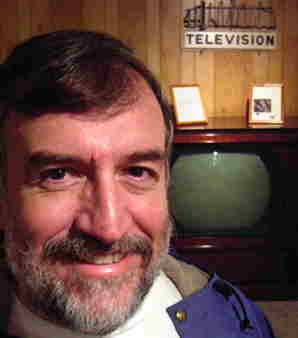This is part 2 of a two-part series by Mark Schubin, a multiple Emmy Award-winning SMPTE Fellow who has worked professionally in TV since 1967. You can find it unexerpted at: [Mobile 3-D, Part II: Music to One’s Eyes?]
The Society of Motion-Picture and Television Engineers (SMPTE) devoted an entire webcast of its Professional Development Academy (PDA) in June of 2009 to the subject, “Producing Stereoscopic Content: What Makes Great 3-D Great and What Can Go Wrong.” How, for example, can distant scenes be made to look like they’re in 3-D (long distances dilute the effect) without …
As the existence of the SMPTE PDA webcast shows, effort is being devoted to production issues. And, as the appearance of a glasses-free 3-D mobile-phone display at the exhibit of Korea’s Electronics and Telecommunications Research Institute (ETRI) at …
The third category, however, is psychophysical issues–how viewers respond psychologically to the physical stimuli of 3-D imagery. …
The infinity-interpupillary problem is different. When looking at something infinitely distant, eyes point straight ahead, creating parallel views separated…
In 3-D, “infinity” can actually be pretty close. When looking at something at a distance of 120 feet, our eyes each “toe-in” from looking straight …
That’s not too much of an issue for 3-D in a movie theater. The left- and right-eye images of a distant object can be placed 2.5 inches apart. Unfortunately, if that’s done for a 30-foot-wide screen, …
On a 15-foot screen, everything would appear to be too close. On a home TV, the same object would seem really too close. That’s why 3-D TV might not be able to “repurpose” 3-D movies directly…
Perhaps that’s one reason why 3-D TV has yet to take off. The first 3-D TV broadcast was in 1928, and by 1953 Business Week ran the headline …
No one would argue that music adds to the reality of dramatic or comedic programming. We don’t go through life with a band of personal musicians providing a background to our emotional states….
What changed his mind was Bernard Hermann’s music score. It converted what might have been a mere TV episode into a movie classic, …
Could 3-D be similar to movie music? The stereoscopic scene shown on the mobile phone at the ETRI exhibit at NAB 2009 …
Tags: 3-D, 3D, infinity-interpupillary problem, mobile 3D, producing stereoscopic content, SMPTE, stereoscopic
This entry was posted on Thursday, June 25th, 2009 at 9:00AM and is filed under Guest Column, Home Feature.
See Part One: Muscles Matter
